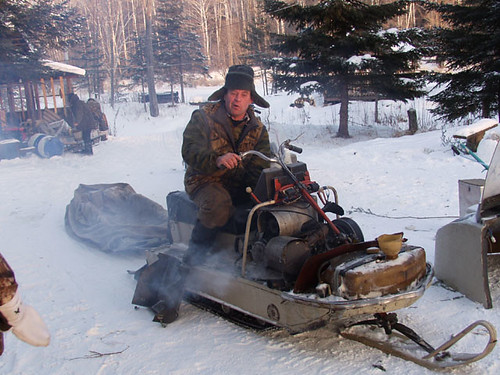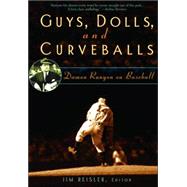Monday, November 21, 2005
Brining – The Four B’s
 I hate turkey. Even moist juicy turkey. Give me that spice and flavor sponge known as a chicken any day. And most days are any days except for Thanksgiving and Christmas which are THE DAYS, or B-days in our household. While I’m not a fan of eating the big bird, concocting different ways of preparing it is quite enjoyable. As the designated cooker, I’ve almost run the complete gamut of turkey preparation. I’ve stayed away from the boiling in hot oil and lead method, a technique that’s always been akin (to me) to the “You’ll-shoot-your-eye-out” version of a bb-gun. Way too many stories of people burning themselves, their decks, their houses. Minimal physical damage both to myself, my loved ones, and my property has been the guiding light in food preparation. As a lad, I blew out the windows of 3 rooms in our apartment making cookies in a gas stove. Even my uni-brow was singed off which, as a Croatian, was the extreme of relinquishing one's manhood. So, I’m intimate with the destructive power of food concoctions. Here then is a relatively harmless way to prepare your holiday bird.
I hate turkey. Even moist juicy turkey. Give me that spice and flavor sponge known as a chicken any day. And most days are any days except for Thanksgiving and Christmas which are THE DAYS, or B-days in our household. While I’m not a fan of eating the big bird, concocting different ways of preparing it is quite enjoyable. As the designated cooker, I’ve almost run the complete gamut of turkey preparation. I’ve stayed away from the boiling in hot oil and lead method, a technique that’s always been akin (to me) to the “You’ll-shoot-your-eye-out” version of a bb-gun. Way too many stories of people burning themselves, their decks, their houses. Minimal physical damage both to myself, my loved ones, and my property has been the guiding light in food preparation. As a lad, I blew out the windows of 3 rooms in our apartment making cookies in a gas stove. Even my uni-brow was singed off which, as a Croatian, was the extreme of relinquishing one's manhood. So, I’m intimate with the destructive power of food concoctions. Here then is a relatively harmless way to prepare your holiday bird. Brining the turkey has been my preferred method the last 3-4 years. Things seemed to turn out favorably. The meat was juicy, the kitchen did not burn down or suffer permanent bad smell syndrome, no guest/family member was incapacitated by the finished product. What more can you hope for? Besides, brining is just up my proverbial alley. I believe in the supreme power of water, whether it’s in motion, as in coming out your tap, or if it’s in its natural and, granted slow, stage of purifying and cleansing, also known as soaking. My ever-loving wife and I are on opposite sides of this concept. For me, conscious of water conservation and minimal use of chemical cleaning agents, there’s nothing as effective as a 4-5 hour soak for cleaning our dishes. The ever-loving wife, put off by the dish-dip sitting in our sink, tends to run the hot water at high velocity and liberally squirt the dish-washing liquid as if the avian flu has taken up residence in our Kohler sink. Brining is a kin of the dish soak. Water, flavored with enough salt to kill any bacteria, gently, surreptitiously imbues itself into the fabric of the meat, sealing in liquid and taste. So, just keep the Four B’s in mind and your family and guests will safely nod off to turkey induced zzz-land.
Buckets – Well, "Bucket" really, but, being a guy, multiples always make a task sound more challenging. Get yourself a new one, if it's tool acquisition you’re after. I tend to stick with any 5 gallon bucket that’s been lying around the laundry room. The laundry room has detergent, cleaning agents, bleach, stain removal sticks, all the usual indicators that there’s some kind of high-powered chemical cleaning going on. The bucket’s got to be clean in this environment, right? Do yourself a favor (cause you’ll hear about it otherwise) and do not use any bucket lying near the sump pump, sewage drainage pipes, or by your oil change accoutrement pile in the garage. Just like people, the company a bucket keeps is the company it reflects. If you have a choice of plastic or galvanized, go with the galvanized bucket. You’ll thank me later (see Buckshot).
Bags – After carefully selecting your bucket (and don’t call it a pail; a two syllable word for your tools of the cooking trade is always preferable to a one syllable word….hmm, except for "bag", where the short-'n-sweet principle applies), it's time to prepare the bird bed. Well, bird bag, actually. Go for the heavier gauge, don't use those see-through flimsy plastic bags, unless you truly prefer the "essence of bucket" as one of your principal seasonings. Since you’ll be loading this bag with nefarious looking liquids, I suggest a dark tone. White bags, while suggesting sanitary are not beneficial for one’s sanity. The white bags are diaphanous, a trait usually more associated with the costumes of love, not the costumes of poultry. So, unless you are having some relations with your turkey that I'd rather not allow a fleeting notion of to skitter through my mind, you should use a dark bag. In fact, the darkest thickest plastic bag you can find.
The bag should be placed in the bucket, with the top of the bag wrapped around the lip of the bucket. The bag should be opened and spread out hugging the contours of the bucket. When you look down into the bucket, the black hole staring up at you should seem as if it will suck the very soul from the tiny protected core of your self-image.
Into a large kettle/pot (the largest you can find), heat up 2-3 gallons of cold water. Measure and pour into this pot, 2 cups of Kosher salt, ¾ cup of firmly packed dark brown sugar, 10-15 peppercorns, 3 teaspoons of the following spices- rosemary, garlic powder, Dalmatian sage, red pepper flakes, 3 halved red onions and any other flavors you have a yen for. As soon as the salt and sugar have dissolved, turn the heat off. No boiling!!
Now, a lot of cookbooks tell you to cool the water down, but they don’t tell you how except by using that dangerous word, "wait". They may suggest you put it into the fridge. Right. Who has the room in a fridge during this time of year for anything except one more slice of cheese? I never got into that Wolf Stove, walk-in refrigerator kitchen re-hab work, so we have your basic refrigerator. Certainly not enough room for a large pot or, as we shall shortly see, a five gallon bucket. Granted, brining is just a short Alogonquin word for "waiting in a cold pool of salty water". But, you don’t want to be waiting so that you can wait. This is where that deck that you spent last summer building and never using comes into play. It’s your quick-cool station. Take the pot out there, throw in a small pot of ice-cubes, and let the chilly weather do the rest. Once the water is cool, bring your bucket out to your "brining" deck. Empty the contents of the pot into the bag-in-the-bucket. Lean over and brace yourself. Even in the cold temperature, your nostril hairs should start curling with the smell emanating from your turkey bag.
Bird – Look, how often do you have a turkey dinner at home? How often do you go through these preparations? You spent less time deciding what college you’d be attending, right? So, here’s the key point. Don’t go cheap on the bird. Get a Bell & Evans or one of those turkey/poultry farms that allowed your meal to be perambulating around, out in the sun, eating and enjoying its life on earth before it reached its unnatural end. If you get it fresh, which I highly suggest, you don’t have to worry about the thawing part. Take the turkey outside on your "brining" deck, unwrap it and wash it down with your hose. A word of caution here. You know that high-powered pressure washer that you got this year because you wanted to scrape the paint off your house the aqua way? Stay clear of that for this job, unless you want a scene on your porch worthy of a John Carpenter movie. After the hose-down, drop the bird into the bucket. Again, cookbooks suggest you put the bucket in the fridge, which means, for most of us, you have to empty the fridge and put everything out on your cold deck. Why not just leave the bucket with the bird outside? Place a large cookie sheet on top of the bucket. Then get some bricks or heavier wood pieces that are around due to an overestimate of material needs for a previous home project and place them on the bucket. Let time and water do its magic thing. Wait a minimum of 6 hours, a maximum of 18 hours before extricating the turkey from its chilly bath. Hose is off once more. Pat it dry with paper towels (the kind that don’t break up into small (but chewable) pieces. Then use whatever cooking/heating recipe your family has been horse-collared with through your multiple generations.
…and finally the fourth B.
Buckshot – Comes in handy if the tree rats (known as squirrels in other parts of the country) are particularly aggressive and tired of all those nuts and berries on your trees. Yes, you’ve followed my advice and not used a plastic bucket but gone and purchased that clangy galvanized steel one. Tree rats, operate more under the principal of determination than that of intelligence. Had youo used a plastic bucket, their determination would have allowed them to chew a hole in the bucket and then the bag. Your carefully and scientifically balanced brine would have washed out onto your "brine" deck. Your turkey then would have been slowly chewed by a pack of tree rats during the night while you were in your bed dreaming of drumsticks and mosit breast meat.
Luckily, you went metal.
That metallic scraping sound you hear coming from your back porch is not some malcontent zombie sharpening his axe, it’s a squirrel trying to chew through the metal bucket. Letting loose with some buckshot will usually do the trick. If the sound doesn’t chase them off, I’m sorry to say that you may have to commit small mammal murder. Keeping in mind that just below the surface of that furry tailed soft ivory chested little beast is the mentality of a NYC sewer rat will steel your emotions toward the deed. Just make sure you don’t wing ‘em. The only thing more aggressive than a wounded tree rat is a Grizzly and at least with Grizzlies, playing dead seems to turn them off..mostly.
Happy Brining to All and to All a Good Bite.
Comments:
<< Home Verging on Pertinence Just some more disposable thoughts clogging up the hinterlands
What - no "baste"?! You could "baste by the bucket", I suppose. Crisps the skin and keeps the meat moist ... mmmm, moist meat (insert Homeresque gurgle).
Hope you have a fab Thxgvng, DV. Relaxing, not taxing. Enjoy your family!
Hope you have a fab Thxgvng, DV. Relaxing, not taxing. Enjoy your family!
I should add: I'm not too fond of turkey, either, but the brine you've concocted does look like a winner.
Hey, do you ever stuff a chicken before you roast it? If so, what do you use?
Hey, do you ever stuff a chicken before you roast it? If so, what do you use?
WP I stay out of the "basting" issue discussion. I believe it was a point of discussion during the Treaty of Versailles. And you know how successful that treaty was. Some cooks say "Baste away", some say no. Your "Baste-in-a-bucket" is a technique I've not yet heard of. It sounds totally unappealling, I mean, having a bird floating in a sea of fat. BUt, hey, brining is in that visually unappealling area as well. So, that means, "Baste-in-a-bucket" will soon take off and I can honestly say that I heard it from you first.
Are you working on some catchy logo or representative for that concept. Say, "Bucky, the bucket basting beaver". Lame, but good Canadian content, that.
Post a Comment
Are you working on some catchy logo or representative for that concept. Say, "Bucky, the bucket basting beaver". Lame, but good Canadian content, that.
<< Home Verging on Pertinence Just some more disposable thoughts clogging up the hinterlands


















